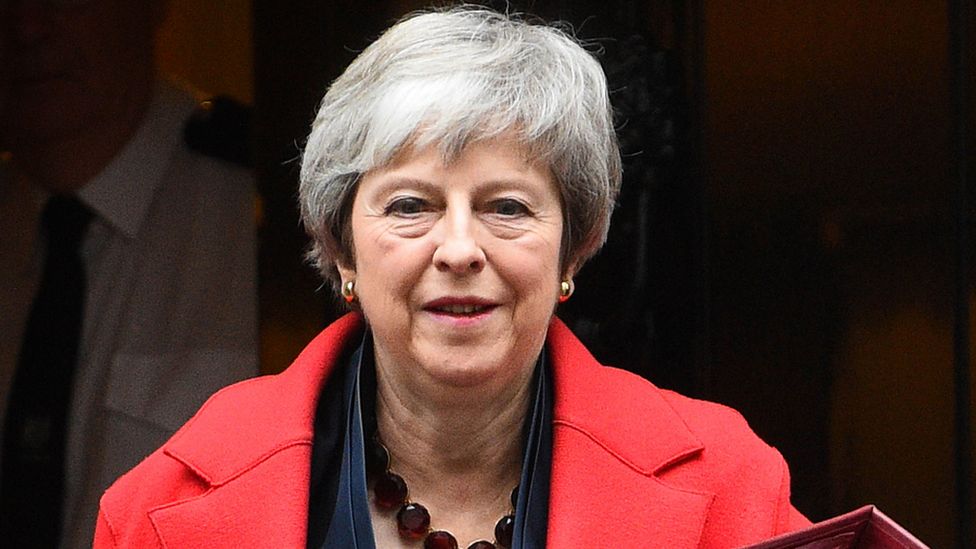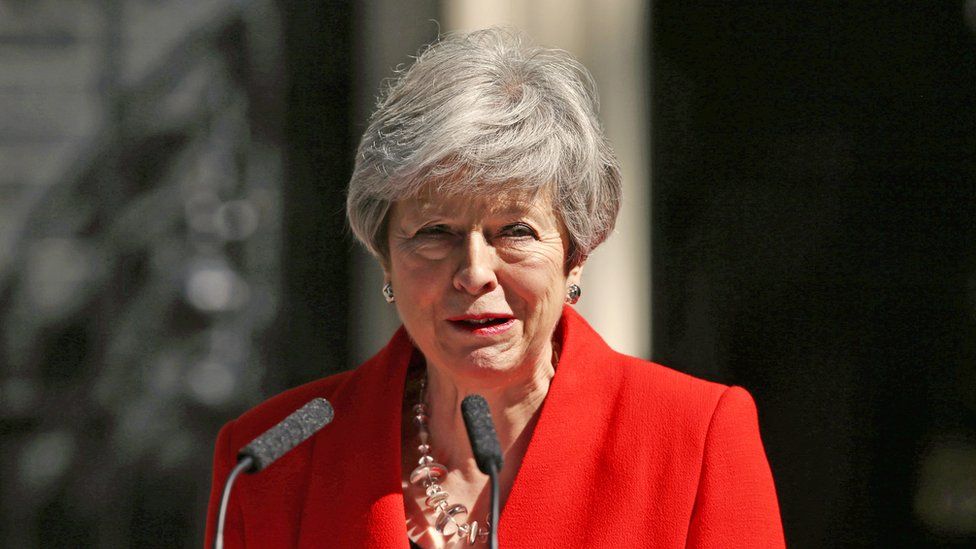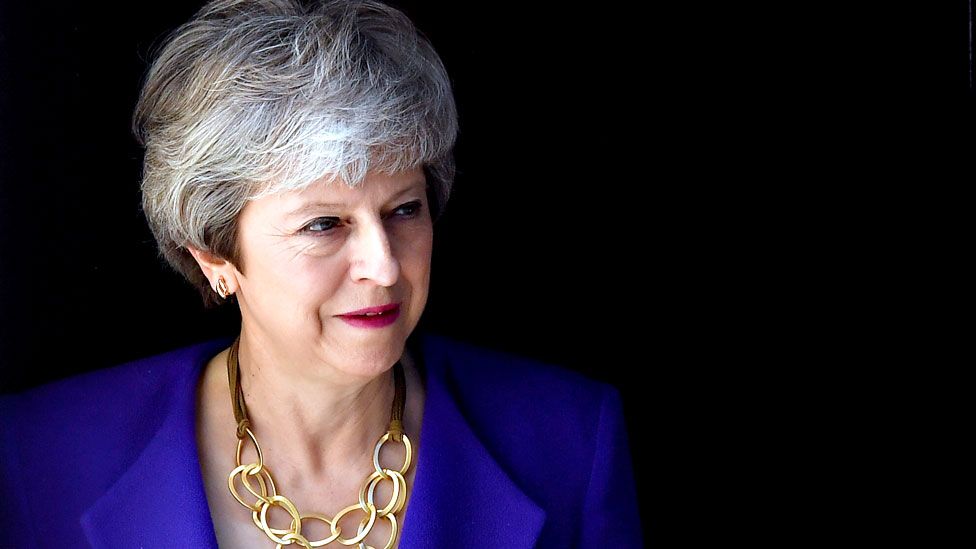Theresa May to stand down as MP at next election

Former Prime Minister Theresa May has announced she will stand down as an MP at the next general election.
Mrs May, who led the country from 2016 to 2019 in the wake of the vote for Brexit, has represented Maidenhead in Berkshire for 27 years.
She said the “difficult decision” to leave the seat would enable her to spend more time on “causes close to my heart”.
She is one of 64 MPs elected as Conservatives set to quit Parliament.
Prime Minister Rishi Sunak, who got his first government job as a junior minister during her tenure in Downing Street, called her a “relentless campaigner” who had been “fiercely loyal” to Maidenhead.
He added that she “defines what it means to be a public servant”.
Her predecessor Lord Cameron called her “a brilliant public servant” who could “hold her head high”, and said she had done much to “modernise the Conservative Party and promote women in public life”.
- Theresa May: My Brexit deal would have been better
- May: Asylum plan won’t solve illegal migration
- The Theresa May story
Mrs May, 67, has represented the safe Tory seat of Maidenhead since 1997, and was re-elected at the last election with a 18,846 majority.
As a shadow minister, she pushed for the Conservatives to field more women in winnable seats, and courted controversy by warning party activists that some people saw them as “the nasty party”.
She entered government after the 2010 election, when Lord Cameron made her home secretary in the Conservative-Liberal Democrat coalition government.
During her six-year stint at the Home Office, she was a chief architect of the government’s “hostile environment” policy for illegal immigrants, which she later admitted had led to some people being caught up in the Windrush scandal.
The vote for Brexit then propelled her into Downing Street in July 2016, following Lord Cameron’s decision to resign, and would become the issue that defined her own premiership.
The former Remainer brought several leading Leavers into her government, including Boris Johnson, whom she made her foreign secretary, but she failed to overcome opposition within her party towards her vision for Brexit.
Election gamble
She called a surprise snap election in 2017 in a bid to strengthen her hand in the negotiations, but it went disastrously wrong, with the Conservatives losing their majority in the House of Commons.
A deal with Northern Ireland’s Democratic Unionist Party saw her remain in No 10, but her authority within her own party was fatally undermined.
She famously suffered several setbacks during her speech at that year’s Conservative party conference, when she struggled with a coughing fit, was presented with a P45 by a protester, and letters fell off the wall behind her as she spoke.
She hit the headlines at the following year’s conference by arriving on stage with a robot-style dance set to Abba’s Dancing Queen, a response to critics who saw her leadership style as wooden and had dubbed her the “Maybot”.
She struck a Brexit withdrawal deal with EU countries, but it angered pro-Leave MPs in her party, leading to a confidence vote against her in late 2018, which she survived.
However, she repeatedly failed to win support for her deal in Parliament and announced her resignation just five months later, in a tearful speech in Downing Street.
This video can not be played
To play this video you need to enable JavaScript in your browser.
She remained a backbench MP, becoming an increasingly vocal critic of her successor Mr Johnson, before he left Downing Street in 2022 following a mass revolt by ministers over his leadership.
Tory peer Lord Barwell, who served as Mrs May’s Downing Street chief of staff after he lost his Commons seat in 2017, said Mrs May would be missed by Parliament and her constituents.
He said he hoped future PMs would “follow her example” by remaining in Parliament after leaving No 10, adding she had made a “number of important contributions” as a backbencher.
Damian Green, a key political ally who served as her de facto deputy prime minister, said she had set a “great example of how to be an ex-prime minister”.
“She uses the Commons to promote what she wants to promote, she’s not over-interfering but is talking sense,” he added.

Mrs May’s announcement brings to 95 the total number of MPs who say they will be standing down at the next election.
The list includes former ministers Matt Hancock, Dominic Raab, Ben Wallace, Sajid Javid, Kwasi Kwarteng and Chris Grayling.
This is already more than the 74 MPs who stood down ahead of the last election in 2019, and the 31 who quit in the run-up to the snap election in 2017.
But it is broadly in line with the 90 who stood down in 2015, while 149 quit before the 2010 election that followed the expenses scandal and saw Labour ejected from power after 13 years.
In a statement announcing her resignation in her local paper, the Maidenhead Advertiser, Mrs May said she had enjoyed championing caused “close to my heart,” including launching a commission on tackling modern slavery.
“These causes have been taking an increasing amount of my time.
“Because of this, after much careful thought and consideration, I have realised that, looking ahead, I would no longer be able to do my job as an MP in the way I believe is right and my constituents deserve.
Anneliese Dodds, the shadow secretary of state for women and equalities, said Mrs May’s decision was further evidence of a lack of confidence in Mr Sunak.
“I think this really strengthens those calls for change, those calls for a general election,” she said.
Related Topics
- Conservative Party
- Theresa May
-
The Theresa May story
-
24 May 2019

-
Published at Fri, 08 Mar 2024 13:26:23 +0000
